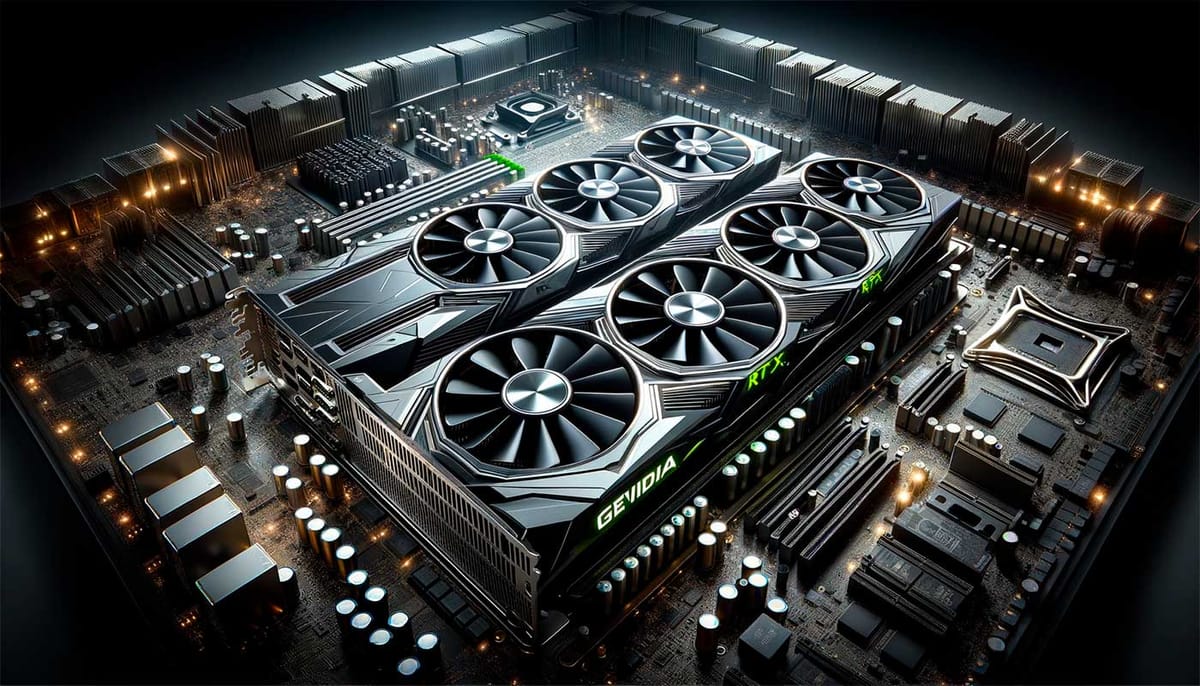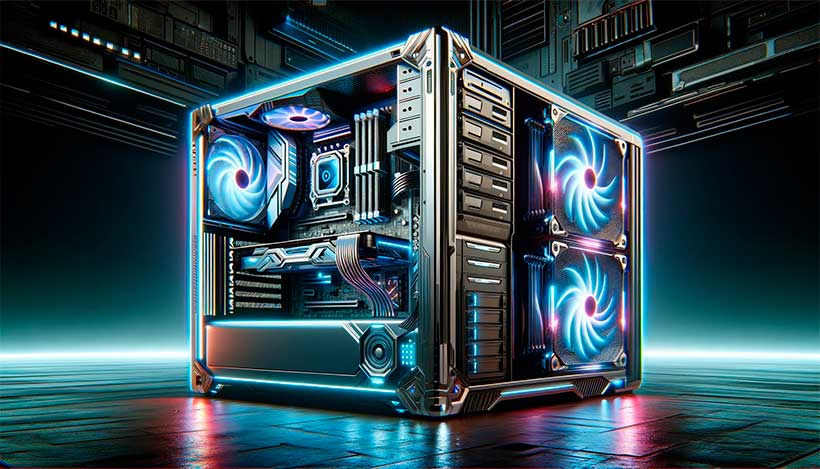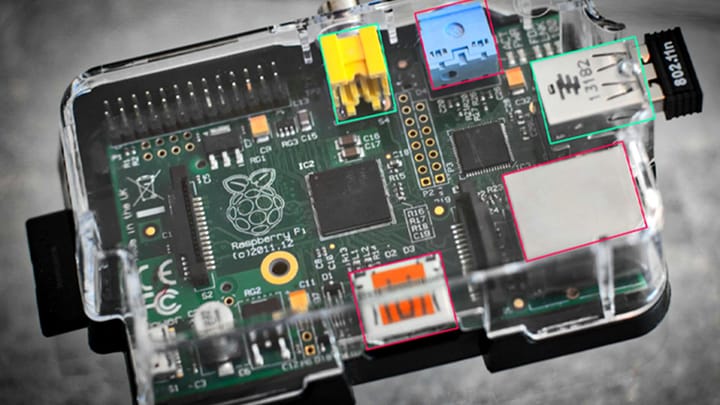20 Best Hardware for Machine Learning in 2023

2023 marks a significant year in AI advancements, highlighting the importance of choosing the right machine learning hardware. Our guide lists the top 20 options, each uniquely combining power, efficiency, and innovation. Ideal for AI enthusiasts and professionals alike, this guide helps you navigate the evolving tech landscape and maximize your machine learning potential. Join us in exploring these groundbreaking tools that are reshaping AI capabilities.
- What is the most energy efficient thermal design?
- What's the best way to measure your machine learning efforts?
- What are some good software tools for speeding up prototyping of machine learning algorithms?
- What kinds of machine learning can be performed at the hardware level?
- Which sensors should you incorporate into your hardware design?
- What should I look for in precision and stability?
- How can I avoid common mistakes when designing my own machine learning hardware?
- How do I choose a microcontroller for my machine learning hardware project?
- What are some other key factors to consider when choosing a machine learning board?
| Product | Link | |
|---|---|---|
| Processors (CPU) | ||
| AMD Ryzen 9 7950X - 16-Core Desktop Processor | View on Amazon | |
| Intel Core i9-13900K - 16-Core Desktop Processor | View on Amazon | |
| AMD Ryzen 7 7800X - 8-Core Desktop Processor | View on Amazon | |
| Intel Core i7-13700K - 16-Core Desktop Processor | View on Amazon | |
| AMD Ryzen 5 7600X - 6-Core Desktop Processor | View on Amazon | |
| Video Cards (GPU) | ||
| NVIDIA GeForce RTX 4090 - 24GB GDDR6X Graphics Card | View on Amazon | |
| NVIDIA GeForce RTX 4080 - 16GB GDDR6X Graphics Card | View on Amazon | |
| AMD Radeon RX 7900 XTX - 24GB GDDR6 Graphics Card | View on Amazon |
What is the most energy efficient thermal design?
In recent years, thermal design has become an important factor in the development of energy-efficient systems. With the development of new technologies and the increasing demand for more energy-efficient devices, it is important to consider the thermal design of devices when developing energy-efficient systems.
The most energy efficient thermal design is one that minimizes the amount of heat that is generated by the device. This can be accomplished by using materials that have a low thermal conductivity, by using a heatsink to dissipate heat, or by using a cooling system to remove heat from the device.
Using materials with a low thermal conductivity will minimize the amount of heat that is generated by the device. This can be accomplished by using a material with a lower thermal conductivity than the device itself, by using a barrier to prevent heat from conducting through the device, or by using a material with a high thermal conductivity to Conduct heat away from the device.
A heatsink can be used to dissipate heat from the device. A heatsink is a piece of metal or other material that is placed in contact with the device to help dissipate heat. Heatsinks are commonly used on devices that generate a lot of heat, such as CPUs and GPUs.
A cooling system can be used to remove heat from the device. A cooling system can be a fan, a liquid cooling system, or a phase-change cooling system. Cooling systems are commonly used on devices that generate a lot of heat, such as CPUs and GPUs.
What's the best way to measure your machine learning efforts?
"What's the best way to measure your machine learning efforts?" is a question that I get asked a lot. And it's a great question! After all, if you're going to be investing time and resources into developing machine learning models, you want to be sure that your efforts are paying off.
There are a few different ways that you can measure the success of your machine learning models. One way is to look at the accuracy of your predictions. This is a common metric that is used to assess the performance of machine learning models. Another way to measure the success of your machine learning models is to look at the amount of data that your model is able to learn from. This is often referred to as the model's capacity.
In general, the best way to measure the success of your machine learning efforts is to look at a combination of both accuracy and capacity. By looking at both of these metrics, you can get a more holistic view of how your machine learning models are performing.

What are some good software tools for speeding up prototyping of machine learning algorithms?
When it comes to machine learning, there is a lot of software out there that can help speed up the prototyping process. Here are some of the best software tools that can help you get your machine learning algorithm up and running quickly:
1. TensorFlow: TensorFlow is an open source library for numerical computation that is widely used in machine learning. It allows you to define and optimize your algorithms using data flow graphs. TensorFlow also has a number of built-in operators that you can use to speed up your development process.
2. Keras: Keras is a high-level neural networks API that is written in Python. It is used to simplify the construction of deep learning models. Keras is easy to use and can run on top of TensorFlow, making it a good choice for prototyping your machine learning algorithm.
3. PyTorch: PyTorch is an open source machine learning library for Python that is widely used in deep learning. It provides a dynamic computational graph that allows you to define your algorithms flexibly. PyTorch also has a number of built-in operators and libraries that can speed up your development process.
4.MXNet: MXNet is a deep learning framework that is used for both research and production. It is fast, scalable, and easy to use. MXNet also has a number of built-in operators and libraries that can speed up your development process.
5. Caffe: Caffe is a deep learning framework that is widely used in research and industry. It is fast, scalable, and easy to use. Caffe also has a number of built-in operators and libraries that can speed up your development process.
6. Theano: Theano is a deep learning library that is written in Python. It is used to define, optimize, and evaluate your algorithms. Theano also has a number of built-in operators and libraries that can speed up your development process.
7. Torch: Torch is a machine learning library that is widely used in research and industry. It is fast, scalable, and easy to use. Torch also has a number of built-in operators and libraries that can speed up your development process.
What kinds of machine learning can be performed at the hardware level?
Machine learning is a subset of AI that deals with the creation of algorithms that can learn and improve on their own. Deep learning is a type of machine learning that uses a neural network to simulate the workings of the human brain. Both of these can be performed at the hardware level.
Machine learning hardware refers to the physical hardware that is necessary for machine learning to take place. This can include anything from simple processors to more complex GPUs and TPUs. Deep learning hardware is similar to machine learning hardware, but it is specifically designed for deep learning tasks. This type of hardware is usually more powerful than machine learning hardware, as it needs to be able to handle the large amounts of data that are involved in deep learning.
AI hardware is any hardware that is related to artificial intelligence. This can include both machine learning hardware and deep learning hardware, as well as other types of hardware that are used for AI tasks.

Which sensors should you incorporate into your hardware design?
When it comes to hardware for deep learning, there are a few key sensors that you should definitely incorporate into your design. Firstly, you’ll need a good camera. This is important for capturing images and data that can be used to train your deep learning models. Secondly, you’ll need a good microphone. This is important for capturing audio data that can be used to train your models. And lastly, you’ll need a good accelerometer. This is important for capturing data about movement and can be used to train your models to recognize patterns of movement.
There are other sensors that you could incorporate into your design, but these are the three key sensors that you should definitely have. So, if you’re looking to incorporate deep learning into your hardware design, make sure to include these three sensors.
What should I look for in precision and stability?
If you're looking for precision and stability in yourAI hardware, you want to look for a few key things. Firstly, you want to make sure that the device is made with high-quality materials. This will ensure that it is able to withstand repeated use and maintain its accuracy. Secondly, you want to look for a device that offers a variety of different presets. This will allow you to customize the device to your specific needs and ensure that you're getting the most accurate results possible. Finally, you want to make sure that the device is easy to use and comes with clear instructions. This will help you get the most out of the device and ensure that you're able to use it to its full potential.
How can I avoid common mistakes when designing my own machine learning hardware?
When it comes to designing machine learning hardware, there are a few common mistakes that many people make. Here are a few tips on how you can avoid making these same mistakes:
1. Not Doing Your Research
One of the most common mistakes people make when designing machine learning hardware is not doing their research. There are a lot of different hardware options out there, and it’s important to research all of your options before making a decision. Not all hardware is created equal, and you want to make sure you’re choosing the best option for your needs.
2. Not Thinking About Future Maintenance
Another mistake people make is not thinking about future maintenance. When you’re designing your machine learning hardware, you need to think about how you’re going to maintain it in the future. Things will inevitably break down, and you need to have a plan for how you’re going to fix them. Otherwise, you’ll be stuck with a broken piece of hardware and no way to fix it.
3. Not Budgeting Properly
Another common mistake is not budgeting properly. When you’re designing your machine learning hardware, you need to have a realistic budget in mind. Otherwise, you could end up spending too much money on your hardware and not have enough left over for other important things.
4. Not Testing Your Hardware
Another mistake people make is not testing their hardware before they use it. You need to make sure your machine learning hardware is working properly before you start using it. Otherwise, you could run into problems down the road. Test it out and make sure everything is working correctly before you start using it for your machine learning projects.
5. Not Updating Your Hardware Regularly
Finally, another mistake people make is not updating their machine learning hardware regularly. Just like any other piece of technology, machine learning hardware needs to be updated from time to time. Otherwise, it could become outdated and not work as well as it should. Keep your machine learning hardware up-to-date and you’ll be able to avoid any problems down the road.
How do I choose a microcontroller for my machine learning hardware project?
If you're working on a machine learning project that requires a microcontroller, you'll need to choose one that's powerful enough to handle the task at hand. There are a few things to consider when making your selection, including the microcontroller's clock speed, RAM, and I/O capabilities.
One of the most important things to consider is the microcontroller's clock speed. This is the rate at which the microcontroller can execute instructions, and it's measured in MHz. A microcontroller with a higher clock speed will be able to execute more instructions per second, and therefore potentially learn faster.
Another important factor to consider is the microcontroller's RAM. This is the amount of memory the microcontroller has available to store data. A microcontroller with more RAM will be able to store more data, which is important for machine learning.
Finally, you'll also want to consider the microcontroller's I/O capabilities. This is the number and types of input/output ports the microcontroller has. If you need to connect your microcontroller to a lot of sensors or other devices, you'll need one with more and/or better I/O capabilities.
The best way to choose a microcontroller for your machine learning project is to consult with an expert. They can help you assess your project's needs and recommend the best microcontroller for the job.
What are some other key factors to consider when choosing a machine learning board?
When choosing a machine learning board, there are a few key factors to consider. First, what is your budget? There are a variety of boards available at different price points. Second, what are your power requirements? Some boards are more power-hungry than others. Third, what are your space requirements? Some boards are larger than others. Fourth, what are your cooling requirements? Some boards require more cooling than others. Fifth, what are your I/O requirements? Some boards have more I/O than others. Sixth, what is your form factor preference? Some boards are designed for specific form factors. Seventh, what is your intended use case? Some boards are better suited for certain tasks than others. Eighth, what is your operating system preference? Some boards are compatible with only certain operating systems. Ninth, what is your software preference? Some boards are compatible with only certain software. Tenth, what is your warranty preference? Some boards come with longer warranties than others.
These are just a few of the key factors to consider when choosing a machine learning board. With so many options available, it is important to do your research and choose the board that is best suited for your needs.
Sources:
- Deep Learning Hardware Selection Guide for 2023
- 10 Best Laptops for AI and Machine Learning in 2023:
- Best Workstations for Deep Learning, Data Science, and Machine Learning (ML) for 2023
- 2023: the most popular programming languages for AI:
- Top 10 AI Chip Makers of 2023: In-depth Guide
- AI In Hardware Global Market Report 2023



Comments ()